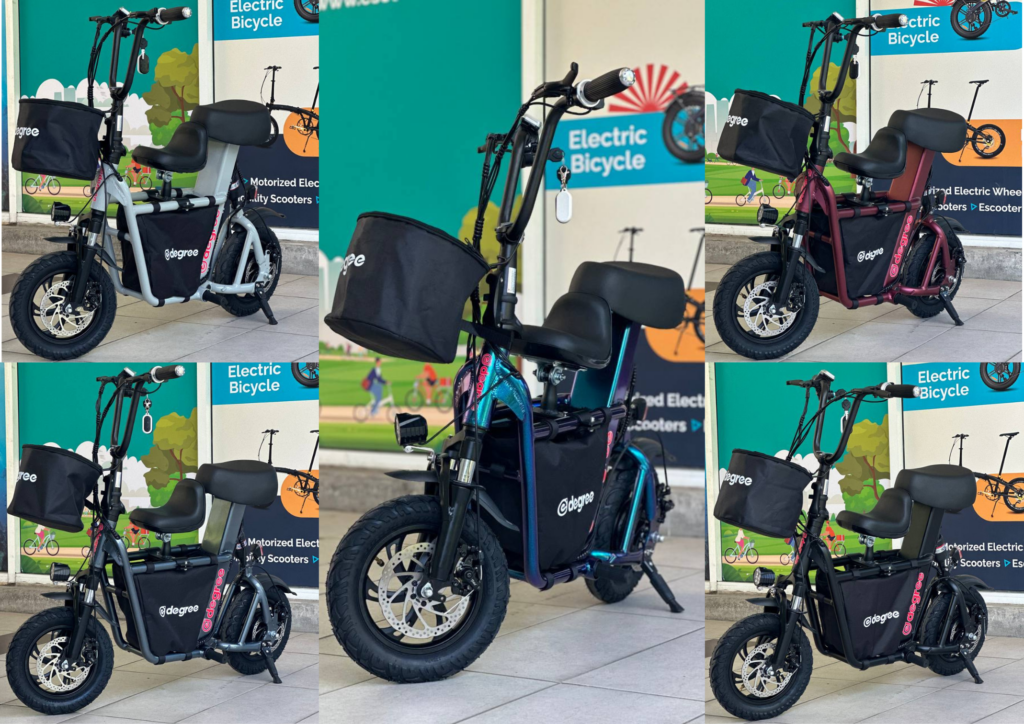
In recent years, seated escooters have gained significant popularity as a convenient and efficient mode of urban transportation. With the ability to cover short to medium distances, seated escooters offer a unique blend of comfort and speed. However, like any innovation, there are both advantages and disadvantages associated with this mode of transportation. In this article, we will delve deep into the hidden benefits and drawbacks of seated escooters, enabling you to make an informed decision about their suitability for your needs.
Pros of Seated Escooters
Seated escooters offer several appealing advantages that make them a favorable choice for many urban commuters. Firstly, the seated design provides enhanced comfort, particularly for longer rides. The seat allows riders to relax and maintain a comfortable posture compared to standing escooters. Additionally, seated escooters often feature larger wheels, shock absorbers, and suspension systems, resulting in smoother rides and reduced impact on uneven terrains. This enhanced ride quality leads to decreased fatigue and a more enjoyable traveling experience. Furthermore, the seated design offers better accessibility for individuals with mobility limitations or those seeking a more inclusive transportation option. This opens up the possibility of escooter travel to a wider audience, promoting a sense of inclusivity in urban mobility.
Cons of Seated Escooters
Despite their advantages, seated escooters also come with certain drawbacks. One notable limitation is their bulkier size and weight, which can make them less maneuverable and more challenging to navigate through crowded urban spaces. Furthermore, their seated design may require larger storage space, rendering them less convenient for certain travel scenarios such as using public transportation or storing them in compact living spaces. Another consideration is that seated escooters might not provide the same level of physical exercise as standing escooters since riders are seated for the duration of their journey. For those seeking a more active form of transportation, this could be perceived as a disadvantage. Additionally, the reliance on a seat introduces an additional component that could potentially require maintenance or become a source of wear and tear over time.
Performance and Versatility
When it comes to performance and versatility, seated escooters offer both distinct advantages and disadvantages. The seated position can provide a sense of stability, especially when navigating through varying terrains and road conditions, contributing to a smoother and more controlled riding experience. The added stability also lends itself well to older riders and individuals with balance concerns. On the flip side, the seated position may limit the rider’s agility and maneuverability, specifically in situations requiring quick turns and reflexes. The lack of standing freedom might also affect the rider’s visibility and ability to anticipate potential obstacles, potentially impacting safety in certain scenarios.
Conclusion: Balancing Comfort and Limitations
In conclusion, the decision to opt for a seated escooter involves balancing the comfort and limitations they offer. Their ergonomic design provides riders with a comfortable and inclusive traveling experience, particularly suitable for longer rides and individuals with specific mobility needs. However, the trade-off involves considerations such as maneuverability, potential storage challenges, and the trade-off between physical activity and comfort. Understanding these pros and cons empowers individuals to make an informed choice that aligns with their transportation preferences and lifestyle. Ultimately, seated escooters present a compelling urban commuting option with unique benefits and considerations that make them a notable addition to the diverse landscape of personal electric mobility.

I find it interesting how they highlight the potential for longer rides and inclusive transportation option. More attention should be given to wheelchair-accessible modifications.
Dear Maegan Fernando, thank you for sharing your valuable thought on creating wheelchair-accessible modifications. At Eko Life Malaysia, we share your passion for making transportation more inclusive. In fact, we collaborate with various partners to provide accessories and adaptability solutions that enhance the riding experience for riders with mobility needs. If you’d like to know more about it, please feel free to reach us via email at [email protected] or call us at +60 3-7890 3042. We value your input and are more than happy to assist you in any way we can.
Honestly, I feel they are a bit larger and less agile than normal scooters. Not sure if they’re worth the bulkiness.
We understand your concerns about the bulkiness of seated escooters, particularly in terms of space and agility compared to other scooters. However, at Eko Life Malaysia, we believe that the comfort and accessibility benefits they offer can outweigh these limitations. For example, our seated escooters are designed with larger, more comfortable seats for longer rides, and are ideal for individuals with mobility needs. If you have any further questions or concerns, please don’t hesitate to contact us via [email protected] or +60 3-7890 3042. We’re here to help.
I see both sides. For those with mobility needs, seated e-scooters offer more comfort, but what about those concerned about portability? Someone needs to address the trade-off.
Hi Maree, thank you for your insightful comment. You’re right, seated e-scooters do offer more comfort for individuals with mobility needs, but we also understand that portability can be a concern. At Eko Life Malaysia, we offer a range of products that cater to different needs and preferences, including foldable e-scooters that prioritize both comfort and portability. If you’re interested in learning more or would like to discuss your options, please feel free to reach out to us at [email protected] or +60 3-7890 3042.